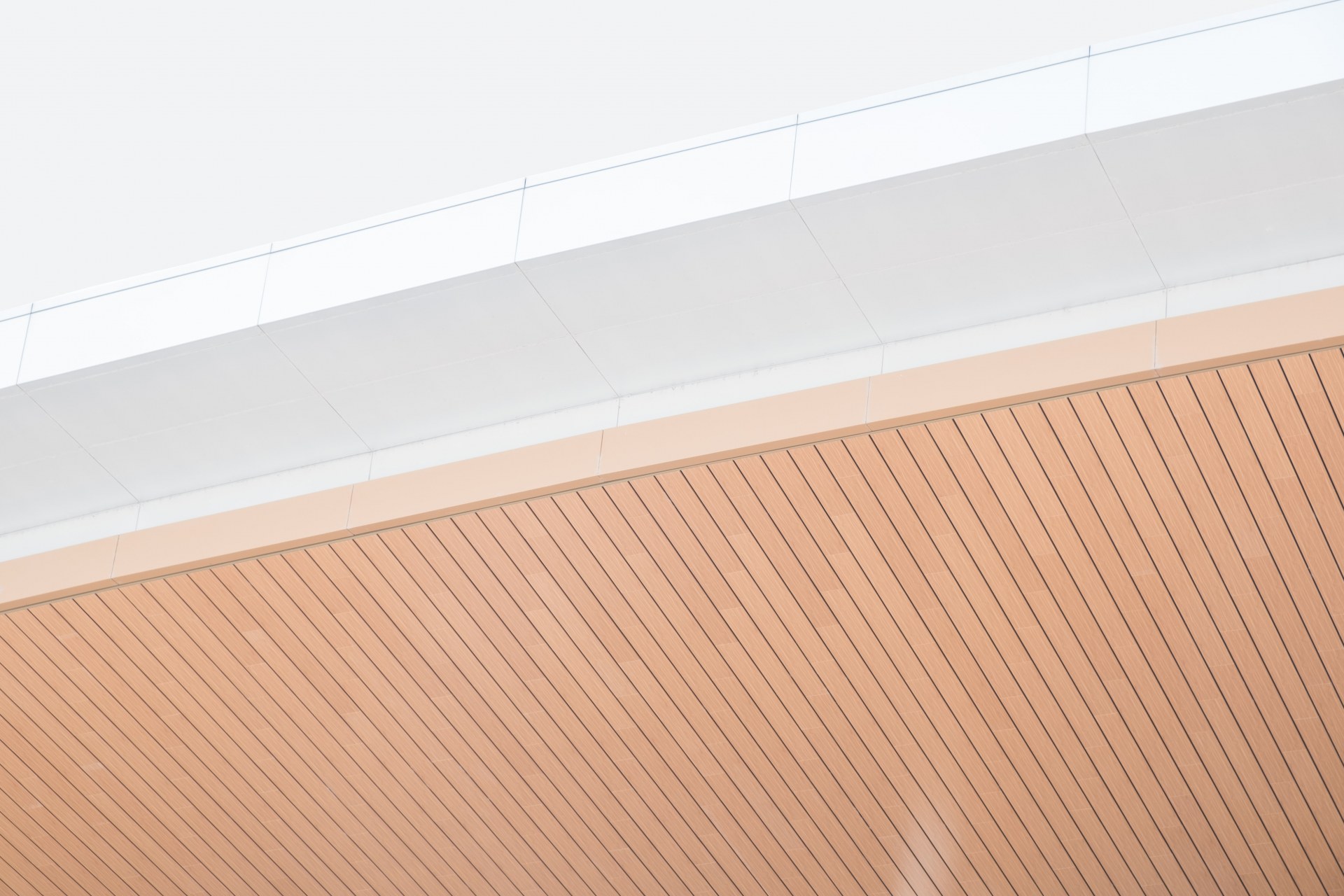
When building or remodeling our homes or offices, we tend to focus on areas that are used regularly and historically bring a solid return on investment. In homes, the bathrooms and kitchen tend to garner the most attention. In businesses, we may focus on places like the reception area or the conference room. It’s because we love when people notice our upgrades. If you want to create a stunning space that your guests and clients will appreciate, ceiling design should be at the forefront of your mind.
A great ceiling can help keep the room quieter, increase headspace and make the room feel larger, and it can showcase your amazing attention to detail. There are multiple different types of ceilings available to choose from, and each brings its own advantages and disadvantages. It all comes down to what you’re looking to accomplish with it.
What should we consider when choosing a ceiling design?
As impressive as a great ceiling can be, not all ceiling types are appropriate for every space. For instance, vaulted ceilings probably won’t work in basements. Since the floor above limits how high we can go with the ceiling, we are left with fewer options, and a vaulted ceiling isn’t one of them. We also don’t generally use drop ceilings in rooms where the ceiling is already very low since they cause us to lose even more height in the room.
Knowing the different types of ceilings available helps us visualize the finished product and make the right decisions. Let’s dig into a few popular ceiling design types and some pros and cons of each.
Conventional or Flat Ceilings
Conventional ceilings are the type that people tend to be most familiar with. The majority of ceilings in modern homes are flat. They are generally cheap and easy to install, making them a favorite option for developers.
In addition to their economic benefits, they are easy to maintain and can be finished with nearly any color and texture combination that you can dream up. Add in the fact that it’s an easy ceiling design choice for DIY enthusiasts to tackle themselves, and you can see why this remains such a popular style.
On the downside, conventional ceilings can be seen as quite dull. Aside from a splash of subtle ceiling texture, they contribute little visual appeal or height to the room. Plus, if you ever decide you want to change the texture in the future, you’re going to have a messy job on your hands. Familiarize yourself with all the different types of ceiling textures before committing, and make sure to pick something you think you’ll like for years to come.
Metal Ceilings
An interesting variation on standard ceilings is metal ceilings. If you aren’t into the textures that people apply to drywall, you can install metal ceiling panels in place of or just below the drywall layer. This is an easy upgrade to existing structures and can deliver much more visual punch than a textured drywall ceiling. A wide variety of materials and finishes also means metal ceilings are versatile enough to work with any decor.
These design benefits do come with a catch, however. Some panels can cause audio issues because they reflect sound waves so well. If this is a concern, perforated panels might be a better option. They reduce echo and trap sound waves through the use of microperforations and optional acoustic backings.
Wood Ceilings
While we are on the topic of extremely versatile ceilings, we can’t help but mention wood. It’s classic and contemporary and everything in between. We can get our hands on so many species of wood these days that you can throw any preconceived notions about what wood ceiling designs look like out the window.
Wood ceilings aren’t quite as reflective as some of the other building materials out there, so they can contribute to a nice ambiance. They also contribute to a cozy feel. The warmth of wood with the right finish is hard to beat.
As beautiful as wood is, there are some downsides. Fixing utilities behind the wood facade can be trickier than with some of the other ceiling types. You can’t simply cut and patch a hole as you can with drywall. It can also be fairly expensive as a building material, so relatively simple tasks can get tricky quickly when you want to salvage your materials.
Exposed Ceilings
The industrial look of exposed ceilings has been a popular choice over the past couple of decades. When we transform historic buildings into new condos and office spaces, many developers leave the ceiling unfinished. It’s a great, modern ceiling design that creates overhead space and creates movement with its parallel lines.
Going this route in historic buildings is a great way to tie the past and present together. We can see how the structure has been used and changed over the years. Highlighting all the pieces that power the unit also presents a multitude of interesting shapes and textures, making your interior decorator very happy.
There are downsides, however. Exposed ceilings add height to the room, making it less energy efficient. They are also typically constructed of very hard, dense materials like metal and concrete. These hard, reflective surfaces make your room noisier by contributing to reverberation. If you decide to go with exposed ceilings, make sure to decorate with plenty of soft, absorbent materials to keep noise levels down.
Suspended or Drop Ceilings
Suspended ceilings are a very popular choice in commercial buildings because they cover a lot of the noisy, unsightly utilities that typically run just below the joists. In drop ceilings, a grid is suspended from the ceiling joists or beams, and each section of the grid is fitted with a panel.
Suspending ceiling panels allows us to place a buffer between our guests and the noisy utilities overhead. Using insulated panels can keep heating and cooling costs down by controlling only the air in the space where people are living and working. They also make repairs a piece of cake since anything above can be accessed by simply removing a panel and replacing it when the repair is complete—no need for patching and painting.
On the downside, not all people want to tackle installing a drop ceiling themselves, so they can run on the more expensive end of the spectrum. This is especially true if you choose to go with high-end panels made of quality materials. On the plus side, these types of ceiling materials can be much more energy-efficient, so your energy savings may justify the cost.
Vaulted or Cathedral Ceilings
Vaulted ceilings are a great way to add something impressive to your space. There are a wide array of different types of vaulted ceilings, but they generally involve two planes that run up at an angle from the top of the walls to a junction that runs down the center.
Vaulted ceilings provide a tremendous amount of space above the room, creating a very open feel. Many people pair their vaulted ceilings with large windows on one or both of the taller walls, which lets in a hard-to-match abundance of natural light.
They don’t come without issues, though. One is that it’s harder to clean and do routine maintenance on overhead lighting that might be ten feet above your head or more. Unless you have a tall ladder and are comfortable with heights, you may find yourself hiring someone to change your lightbulbs and clean your chandeliers.
Another consideration when choosing this ceiling design is that it’s not terribly energy efficient. That high peak means much of your heat rises, causing your furnace to work harder to keep you warm at ground level. If you have large windows to boot, that beautiful daylight can work against your air conditioning unit.
Tray Ceilings
If you don’t have a ton of room overhead but still want to add a little depth to your ceiling, tray ceilings might be a good fit. They are very similar to a standard, flat ceiling but contain a single, recessed section. The recessed portion is typically 6-12 inches above the surrounding portion and is centered in the room. The finished product resembles a tray.
This type of ceiling is a great way to add a little height to ceilings when you don’t have a whole lot of room to go up. If you want a more dramatic look, you can play around with different materials and ceiling texture types for both your molding and the recessed section in the design phase. Cap it with proper lighting, and you’ve got a dramatic improvement to an otherwise boring bedroom.
Tray ceilings don’t always work, though. If the ceilings are particularly low, a tray ceiling may not be your best option, as they may make the room feel smaller. Consult with a professional if you are unsure.
Coffered Ceilings
If you’re looking for ceiling design ideas that create a three-dimensional pattern and add elegance to the room, you can’t beat coffered ceilings. They are very similar to tray ceilings, but where tray ceilings have a single recessed section, coffered ceilings have multiple recessed sections.
They deliver many of the same benefits and pitfalls as tray ceilings, but you can create much more intricate designs with them. The recessed sections are created by beams that run across and down and in whichever direction you want them to. They add a dramatic effect to the lighting in the room and can create very cool textures.
They can also help with your audio issues. Insert acoustical coffered ceiling panels into the recessed section, and they’ll help control echo and reverberation in the room.
Making the decision
Whether you’ve got your eye on a corrugated metal ceiling, or you’ve got a wooden ceiling design idea that’ll knock your client’s socks off, the ceiling design we end up with is usually predicated upon a combination of functionality and price. Working with professionals will ensure you find a balance that’s both beautiful and meets your needs on a budget.




